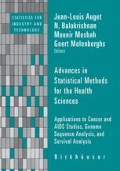Abstract
Smear negative pulmonary tuberculosis (SNPT) accounts for 30% of pulmonary tuberculosis (PT) cases reported yearly. Rapid and accurate diagnosis of SNPT could provide lower morbidity and mortality, and case detection at a less contagious status. The main objective of this work is to evaluate a prediction model for diagnosis of SNPT, useful for outpatients who are attended in settings with limited resources. The data used for developing the proposed models werecomprised of 136 patients from health care units. They were referred to the University Hospital in Rio de Janeiro, Brazil, from March 2001 to September 2002, with clinical-radiological suspicion of SNPT. Only symptoms and physical signs were used for constructing the neural network (NN) modelling, which was able to correctly classify 77% of patients from a test sample. The achievements of the NN model suggest that mathematical modelling, developed for classifying SNPT cases could be a useful tool for optimizing application of more expensive tests, and to avoid costs of unnecessary anti-PT treatment. In addition, the main features extracted by the neural model are shown to agree with current analysis from experts in the field.
Access this chapter
Tax calculation will be finalised at checkout
Purchases are for personal use only
Preview
Unable to display preview. Download preview PDF.
References
Akaike, H. (1974). A new look at the statistical model identification, IEEE Transactions on Automatic Control, 19, 716–723.
Alencar, G. A. (2003). Artificial neural networks as rain attenuation predictors in earth-space paths, Ph.D. Thesis, Federal University of Rio de Janeiro, Brazil.
El-Solh, A. A., Hsiao, C.-B., Goodnough, S., Serghani, J., and Grant, B. J. B. (1999). Predicting active pulmonary tuberculosis using an artificial neural network, Chest, 116, 968–973.
Haykin, S. (1999). Neural Networks: A Comparative Foundation, Prentice-Hall, Upper Saddle River, New Jersey.
Hornik, K. (1991). Approximation capabilities of multilayer feedforward networks, Neural Networks, 4, 251–257.
Kaufman, L., and Rousseeuw, P. (1990). Finding Groups in Data, John Wiley & Sons, New York.
Kritski, A. L., and Ruffino-Netto, A. (2000). Health sector reform in Brazil: Impact on tuberculosis control, International Journal of Tuberculosis and Lung Disease, 4, 622–626.
Long, R. (2001). Smear-negative pulmonary tuberculosis in industrialized countries, Chest, 120(2), 330–334.
Mello, F. C, Bastos, L. G, Soares, S. L, Rezende, V. M, Conde, M. B, Chaisson, R. E, Kritski, A. L, Ruffino-Netto, A., and Werneck, G. L. (2006). Predicting smear negative pulmonary tuberculosis with classification trees and logistic regression: a cross-sectional study, BMC Public Health, 6.
Morrison, D. F. (1990). Multivariate Statistical Methods, Third edition, McGraw-Hill, New York.
Santos, A. M. (2003). Neural networks and classification trees: an application for predicting smear negative pulmonary tuberculosis, Ph.D. Thesis, Federal University of Rio de Janeiro, Brazil.
Sarmiento, O., Weigle, K., Alexander, J., Weber, D. J., and Miller, W. (2003). Assessment by meta-analysis of PCR for diagnosis of smear-negative pulmonary tuberculosis, Journal of Clinical Microbiology, 41, 3233–3240.
Schwarz, G. (1978). Estimating the dimension of a model, Annals of Statistics, 6, 461–464.
Seixas, J. M., Calôba, L. P., and Delpino, I. (1996). Relevance criteria for variable selection in classifier designs, In International Conference on Engineering Applications of Neural Networks, 451–454.
Stone, M. (1974). Cross-validatory choice and assessment of statistical predictions, Journal of the Royal Statistical Society, Series B, 36, 111–147.
Vassali, M. R., Seixas, J. M. d., and Calôba, L. P. (2002). A neural particle discriminator based on a modified art architecture, In Proceedings of the 2002 IEEE International Symposium on Circuits and Systems, Volume 2, 121–124.
WHO (2002). Stop TB, annual report 2001.
Author information
Authors and Affiliations
Editor information
Editors and Affiliations
Rights and permissions
Copyright information
© 2007 Birkhäuser Boston
About this chapter
Cite this chapter
Santos, A.M., Pereira, B.B., Seixas, J.M., Mello, F.C.Q., Kritski, A.L. (2007). Neural Networks: An Application for Predicting Smear Negative Pulmonary Tuberculosis. In: Auget, JL., Balakrishnan, N., Mesbah, M., Molenberghs, G. (eds) Advances in Statistical Methods for the Health Sciences. Statistics for Industry and Technology. Birkhäuser Boston. https://doi.org/10.1007/978-0-8176-4542-7_18
Download citation
DOI: https://doi.org/10.1007/978-0-8176-4542-7_18
Publisher Name: Birkhäuser Boston
Print ISBN: 978-0-8176-4368-3
Online ISBN: 978-0-8176-4542-7
eBook Packages: Mathematics and StatisticsMathematics and Statistics (R0)

